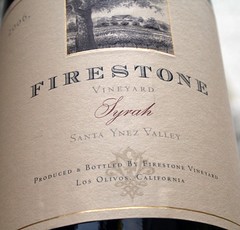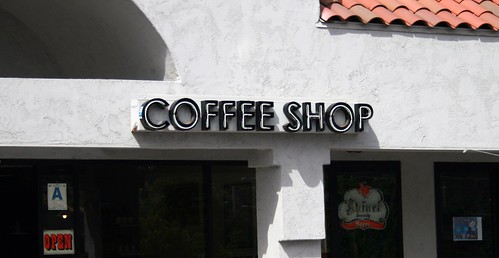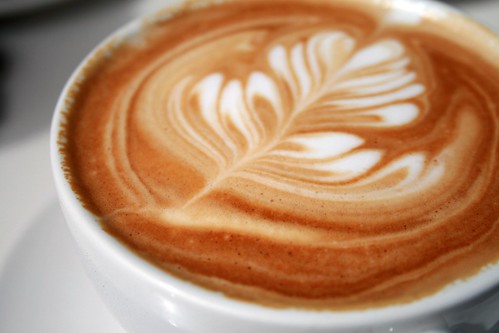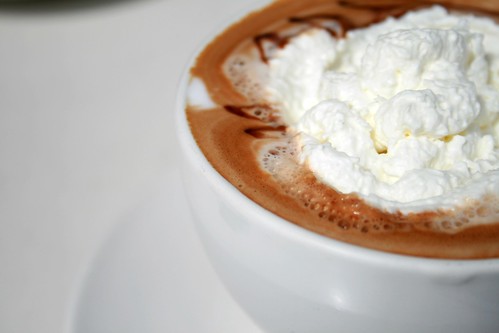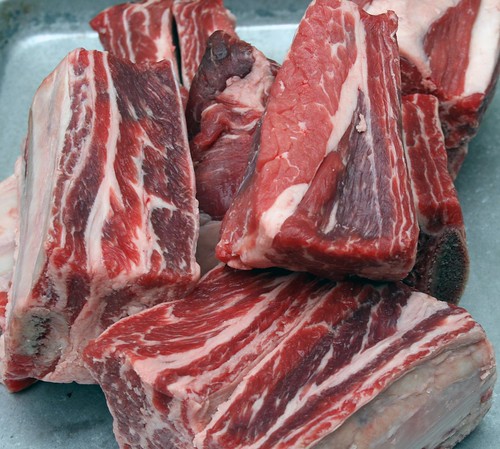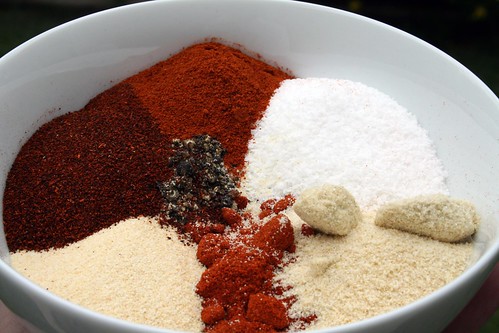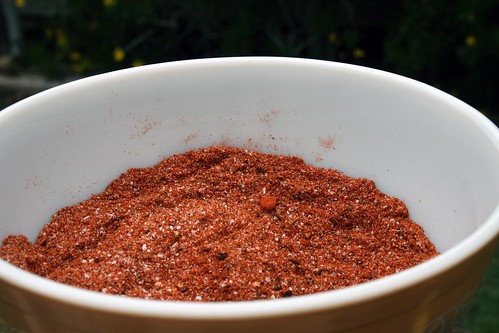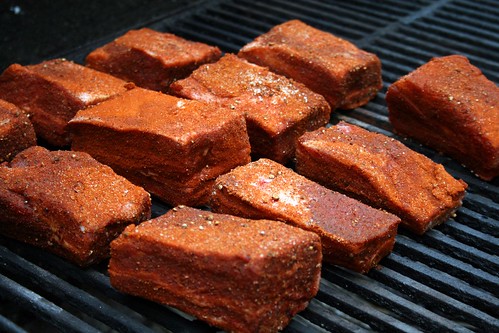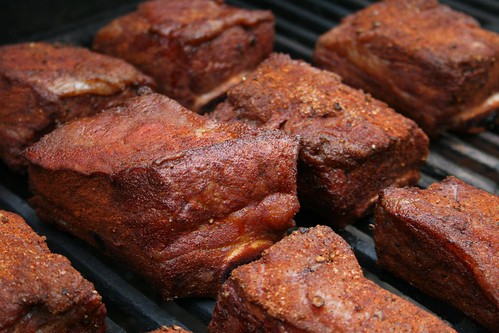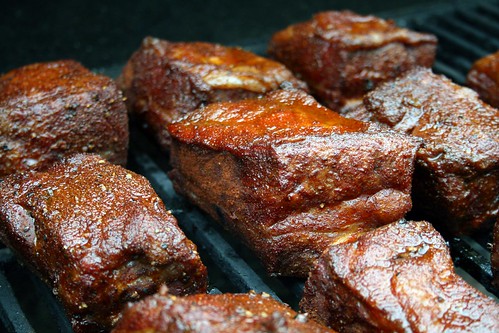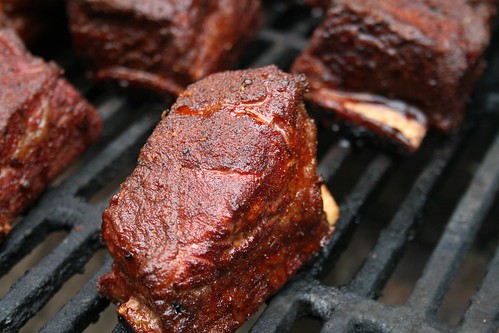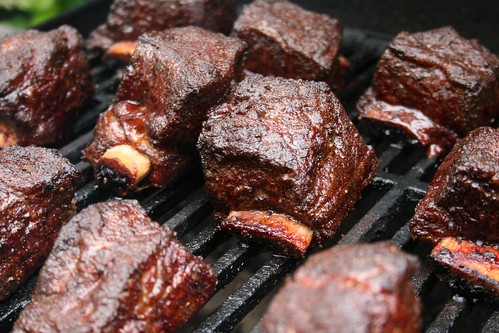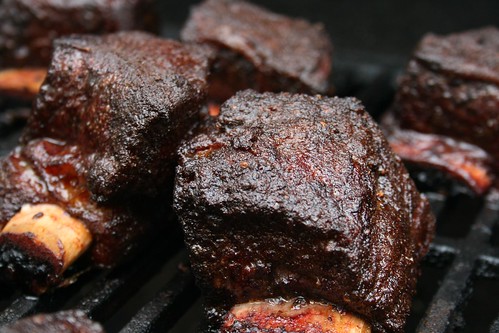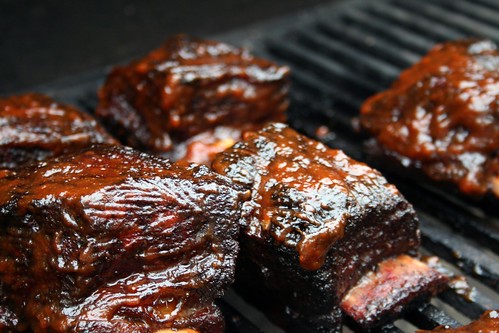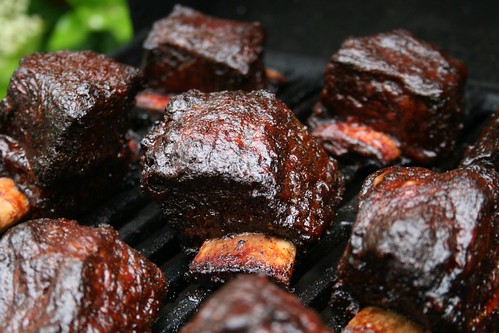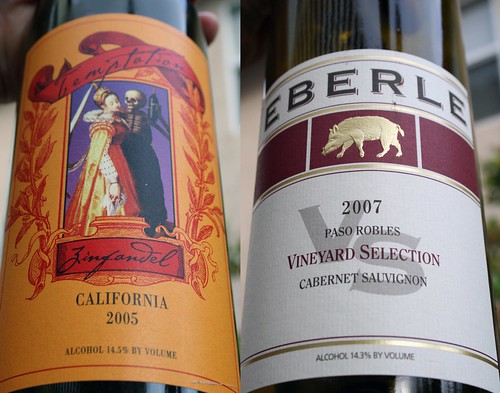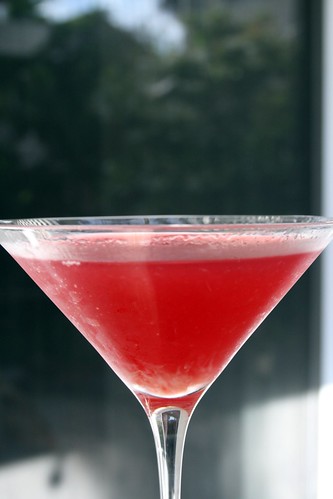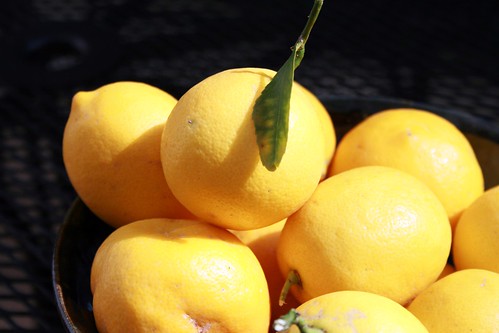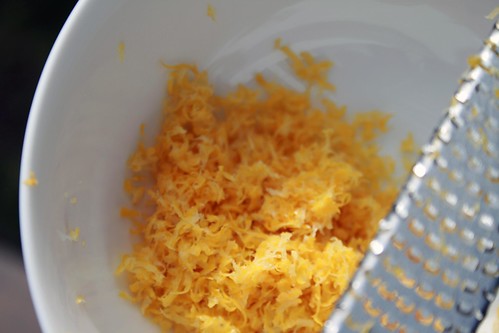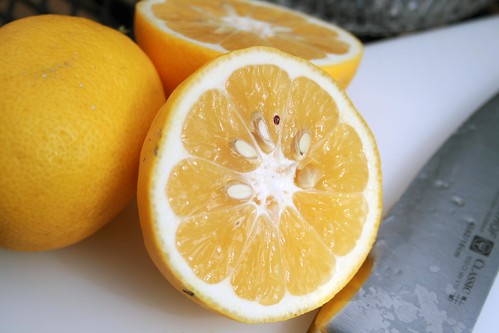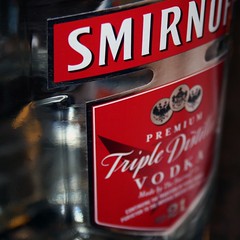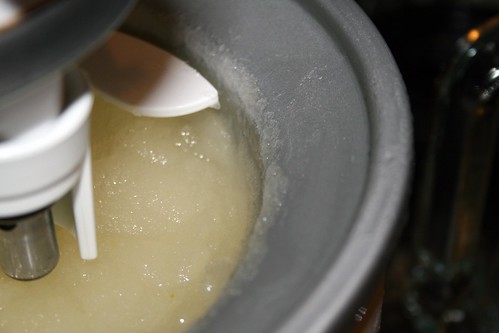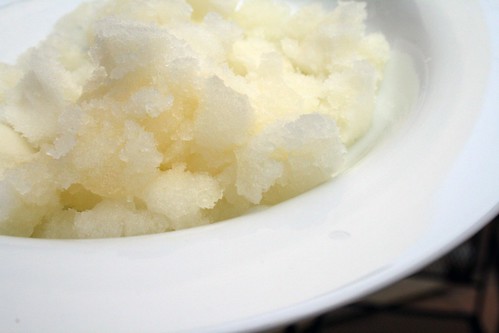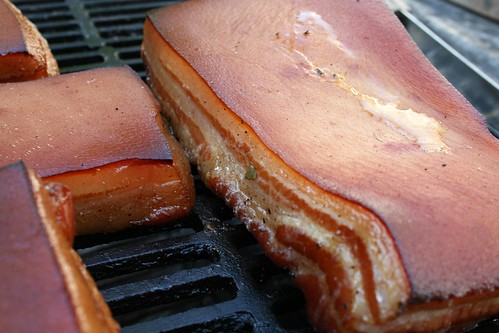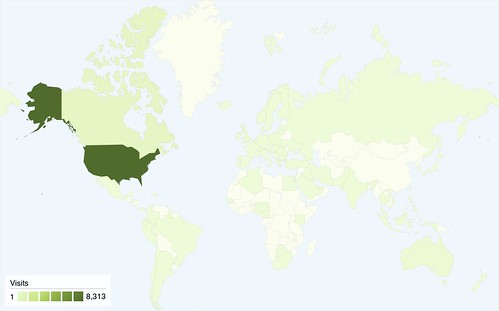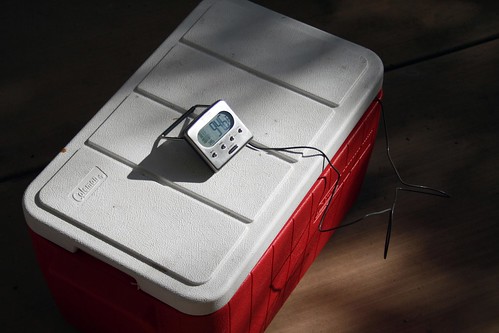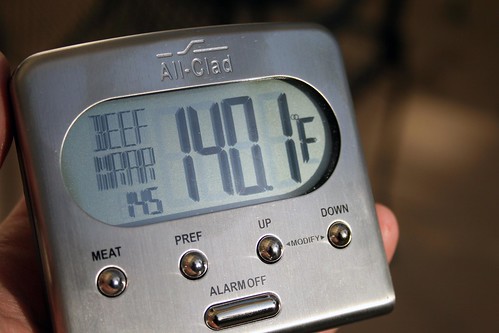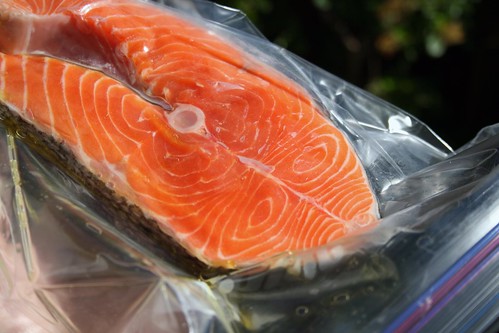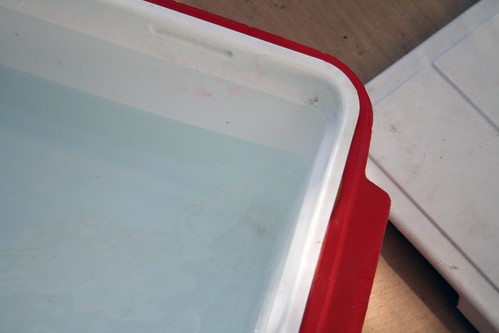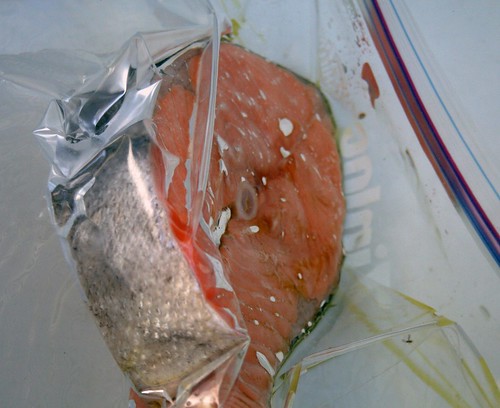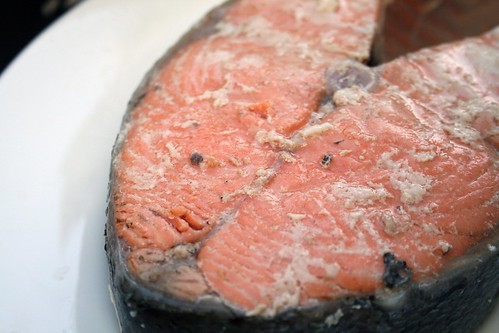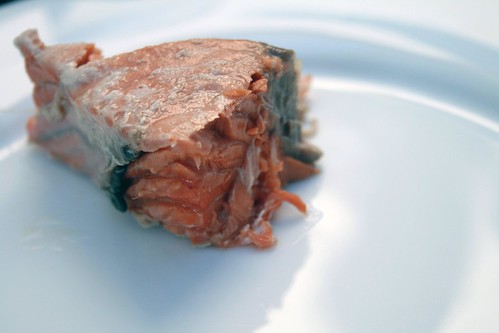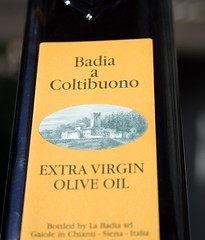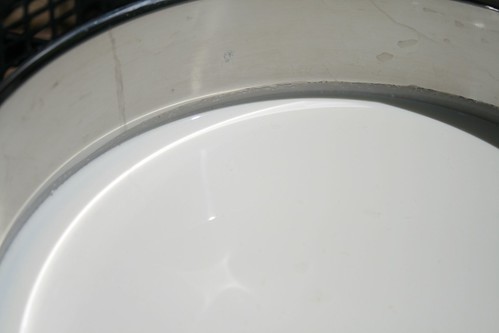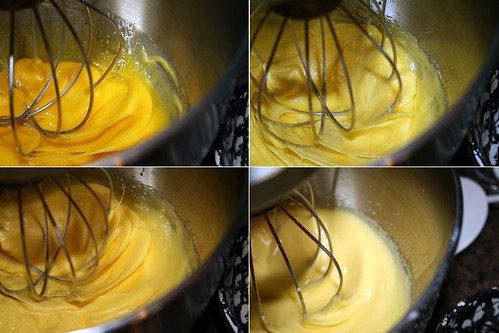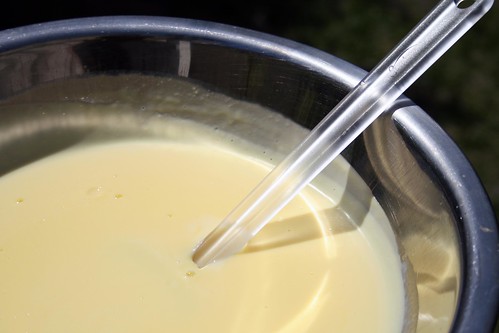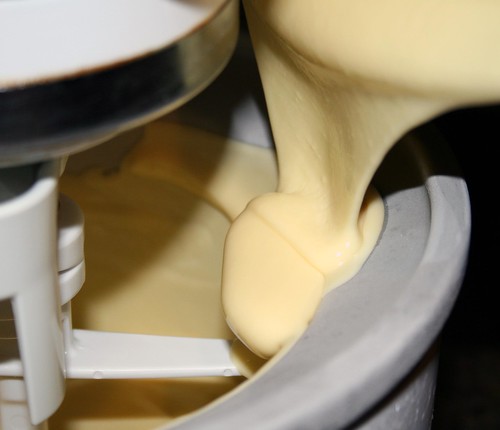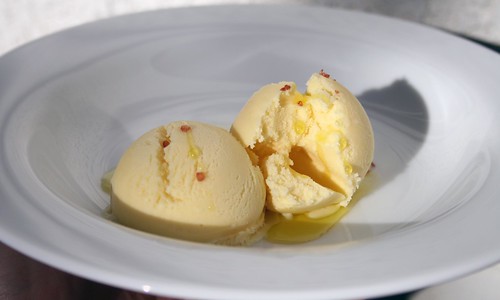I am excited about sous vide cooking. The prospect of
perfectly cooked meat and fish is really exciting. The
salmon that I've done sous vide was perfect (if not particularly photogenic, but that will come). Perfectly cooked and delicious.
What is sous vide? For a long answer,
go here. The short answer, you pack the meat in a vacuum bag, and cook it in a hot water bath kept at a very precise temperature. In normal cooking, a steak for example, you're providing crazy heat on the outside of the steak. The outside of the steak gets well done, the next layer gets medium-well and the inside gets cooked to medium-rare. So basically, you're overcooking the outside of your steak to get the center perfectly done. In a hot water bath, you can set the bath at the final temperature you want, and wait for the entire steak to reach that temperature. Basically, you end up with a steak that is medium-rare on the surface and all the way through. That's sous vide in a nutshell.
Sous vide takes all the trickiness out of steak, resulting in perfectly cooked steak. That sounds pretty good, here at Indirect Heat, so I gave it a go this past weekend with two lovely porterhouse steaks. I got regular steaks, not dry-aged, not marinated, so as to ensure that we were tasting the sous vide steak, and not other treatments of the meat. I've adapted my technique from reading
Under Pressure and from the
eGullet sous vide thread and using a low-tech setup like the one described
here.
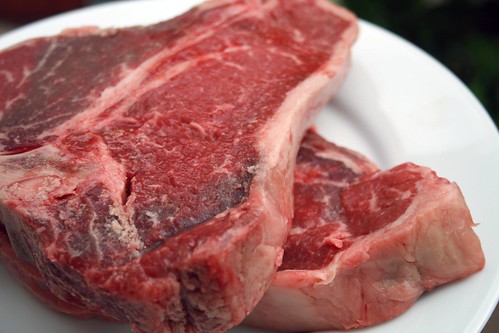
Each steak went in its own ziploc bag, with 2 tbsp of melted butter and a dash of salt and pepper (the salt may have been a mistake, more on that later). Insert a straw into the bag, close the bag around the straw, and use the straw to suck all the air out of the bag, then seal the bag.
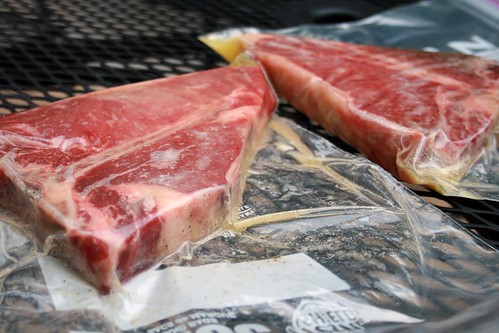
Now set up your beer cooler. Attach the probe for a meat thermometer in the beer cooler. Using hot water and boiling water, pour them into a beer cooler, and mix until you hit 145 °F. Given the cook time, I let the water go anywhere between 143 and 145 °F.
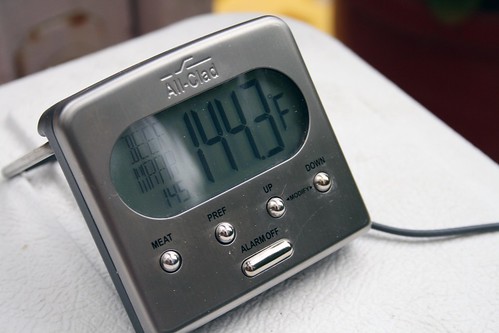
Keep a pot of water boiling to adjust the temperature when you add the steaks and as the cooler cools down. (Over the 90 minute cook, I added boiling water 4 times). Okay. Now drop the steaks in the hot water, stir the water, and add a bit more boiling water (the temperature will drop in the first couple minutes after you add the steak). Hold the temperature at 145 °F.
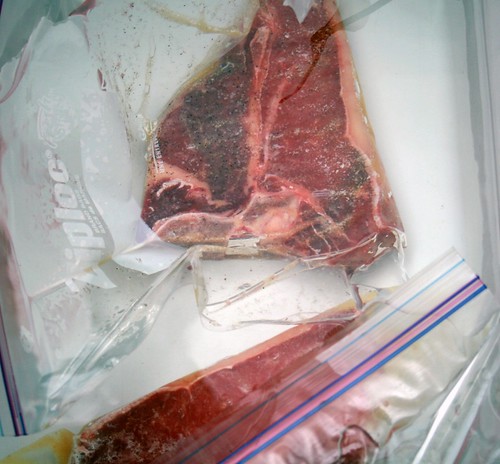
Now close up the cooler. Monitor the temperature, adding boiling water to keep the temperature up as needed. Cook the steaks for 90 minutes.
The steaks will look not that pretty at this point. A tad grey.
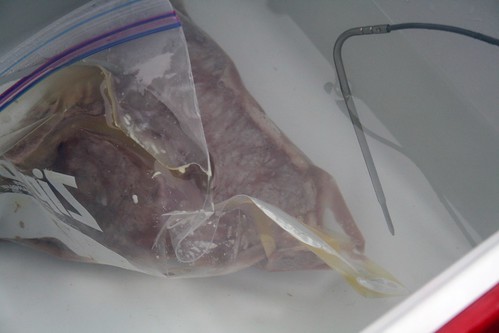
I pulled the steaks out at this point, then removed them from the bags. There was a fair amount of liquid in the bag, and that's when I regretted adding salt to the bags. I pulled those juices right out of the steak. The steaks were extremely soft, and the tongs left a mark on them.
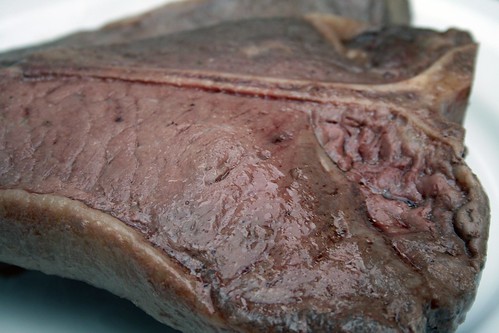
Slightly pink on the surface, but more grey. Now, I let them cool a couple minutes. I had gotten the grill going to sear the outsides of the steak to add a nice caramelization to the outside, but this was also a mistake. You don't want them to be on the grill long, because you don't want to cook them, just brown the outsides.
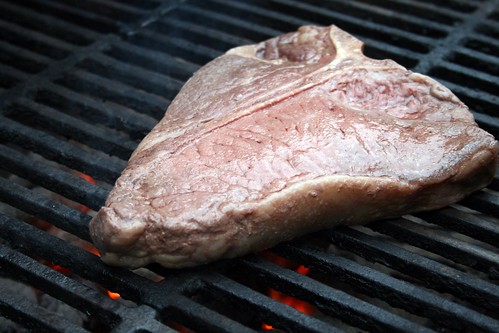
Sear briefly on each side. The grill only really caramelized the meat where the metal was.
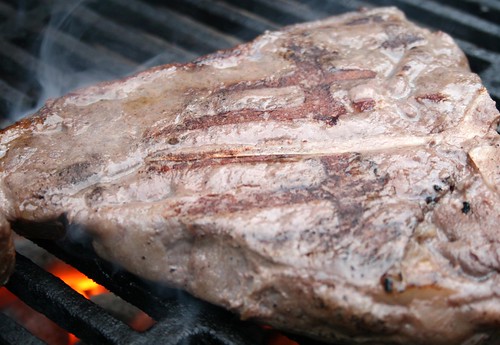
Pull off the grill and let rest for five minutes. Serve.
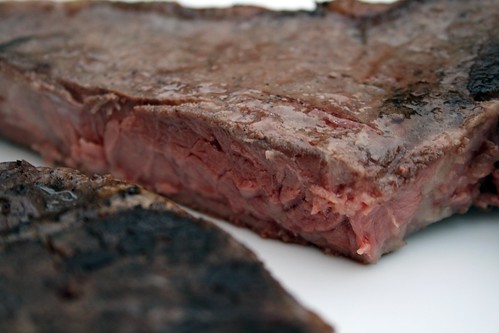
Look at that! If you can't see it properly, click through to
Flickr to see the larger version. It's medium-rare all the way through. It's still pink, even though it's the texture of cooked steak. And that's the weird part of this. The texture is medium-rare all the way through.
A regular medium-rare steak is firmer on the surface, and softer on the inside. This steak was soft the whole way through. I had to be gentle moving it around to prevent myself from crushing it. It was fragile. And it was fragile in my mouth. This was both good and bad. It was certainly unusual, and for someone who wasn't expecting it (Mrs. Dude, for example) it was a tiny bit off-putting. Okay, maybe more than a tiny bit (she's asked that I not make steak this way again).
It also wasn't as juicy as it could have been, and needed more salt. But for all of these flaws, it was soft and it was delicious. When I do it next time (when Mrs. Dude is out of town), I'll do two things differently. No salt until it's done. And the caramelization will either happen on a screaming hot cast-iron pan, or with a blowtorch. This wasn't the best steak I've ever had, but I can see a path towards it being the best steak I've ever had.
Served with:
